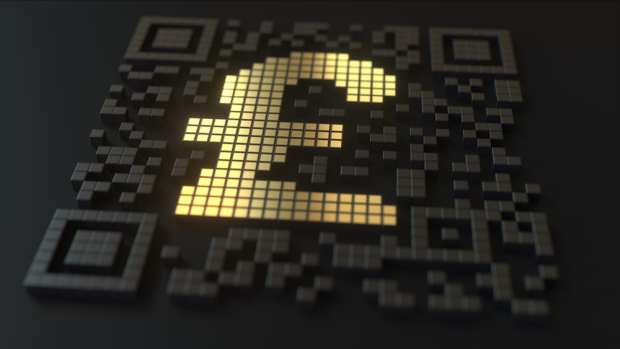Payments Initiation Opens The B2B Door For QR Code Payments

QR codes have enjoyed mounting adoption in the consumer payments landscape around the world in recent years as FinTech solutions embrace end-user efficiency and take advantage of smartphone penetration.
Their use for B2B payments, however, remains limited — but in the U.K., open banking may be able to change that.
While open banking FinTech innovation has initially focused on opening up bank account data to third party platforms, there is another component to the initiative with major implications for the payments landscape. Under PSD2 regulations, Payment Initiation processes enable an end-user to initiate payment to a seller directly from their bank account rather than relying on a third-party payment provider to facilitate the payment.
There are clear opportunities for this capability in the consumer payments arena, but according to Shefali Roy, chief compliance officer and chief operating officer of TrueLayer, payments initiation capabilities under open banking regulations could have significant implications for businesses as well, and may open the door for QR codes to gain traction in the B2B payments arena.
“Payments Initiation, which is enabled by PSD2, is driving the adoption of Open Banking” in the business banking and payments space, she told PYMNTS, pointing to the benefits of lower transaction fees, speed and elevated security as key drivers of adoption. “Each one of these factors provides tangible benefits to businesses.”
Opening The Door To QR Codes
TrueLayer, which offers open banking application programming interfaces (APIs), recently announced an expanded partnership with ANNA Money, a provider of mobile-friendly business account, card and tax management services to small businesses. A previous collaboration saw TrueLayer providing its Data API that allows ANNA Money users unlock financial data; now, TrueLayer is also enabling payments initiation via its Payments Initiation API.
The partnership takes advantage of ANNA Money’s focus on the mobile device as an important payments tool for small businesses, allowing small business owners to receive payment by generating a QR code sent to their customers.
As Roy explained, there are certain advantages of the QR code specifically that can address the unique pain points of smaller and micro B2B businesses in particular.
“This is especially true for SMEs, tradespeople and freelancers who do not have financial departments [or] accounting software, or can only afford limited support from accountants,” she said. “By simplifying the process into a QR code that can be shared via chat to their clients, the whole process is streamlined while remaining highly secure and easily tracked.”
Micro-businesses’ and freelancers’ growing reliance on their mobile device means the payment initiation can begin while professionals work remotely rather than having to go back to an office or desktop to request payment. And unlike traditional bank transfers, businesses and their customers do not have to manually collect or send bank account information between each other.
Accelerating (And Protecting) Cash Flows
A key characteristic of payment initiation under PSD2 is its use of Faster Payments in the U.K., and Roy noted that this significantly accelerates collections and cash flows for small businesses.
“Because speed of payment is fundamental to a lot of businesses, we’ll see new methods such as QR codes that simplify and streamline payments quickly come online,” Roy said, highlighting the faster payments value proposition that payments initiation brings to the B2B arena.
Further strengthening small business cash flows is the ability to facilitate payment collection without the burden of fees charged by external payment professors and other service providers. This is particularly valuable for small businesses with a high volume of sales, said Roy, adding that the financial benefits of this capability can be realized “in a matter of weeks” due to the lower transaction fees alone.
Security for both sides of the transaction is also significantly increased, she noted, explaining that because payers are directed to their online banking portal, the entire payment process falls within a bank’s security protocols and guidelines.
A B2B Opportunity
When TrueLayer first announced its expanded partnership with ANNA Money, the firm’s chief executive officer and co-founder Francesco Simoneschi highlighted the opportunity of PSD2-enabled payments initiation in the B2B payments arena specifically.
“We believe payments initiation and innovation in B2B payments is going to be one of the major trends in finance over the next few years,” he said in a statement. “Reducing costs, increasing security and speed in business-to-business payments will make a profound impact on SMEs, saving them all a significant amount of time.”
According to Roy, the use-case of QR codes in facilitating B2B payments initiation is one example of the kind of business banking and payments innovation catalyzed via open banking.
“Each week we see businesses from a wide variety of sectors find a way to incorporate open banking-based products into their offerings,” she said. “QR codes [are] an excellent example of the innovation we will see on the back of Payments Initiation. Businesses both small and large, when they learn about the superiority of Payments Initiation in relation to other payment methods, will quickly embrace it.”
